If you do any amount of flying within the US, you’ve surely flown one of the regional airlines operating on behalf of a bigger carrier. When you board you might be greeted with a “welcome aboard this American Eagle flight operated by Skywest,” for example. American Eagle is the brand that American markets for their regional flights, while Skywest is the airline operating the flight.
Skywest doesn’t just operate for American, but also operates flights for Alaska, Delta, and United.
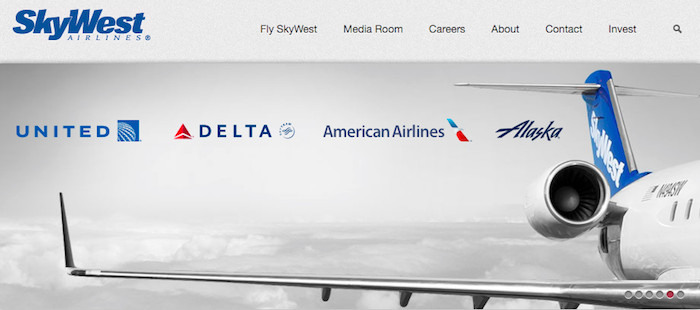
That brings me to the question that reader AL emailed me:
Why do airlines like United and Alaska outsource to third party airlines like Skywest for puddle jumpers? Why don’t they just create a separate entity to operate puddle jumpers themselves and take home all the cash?
It never made any sense to me.
What’s the benefit to airlines of using regional carriers?
The simple answer is that using regional airlines saves major airlines money compared to them operating a flight themselves. Where do the cost savings come from? For one, employees are paid significantly less.
Let’s look at pilots, for example. Per Airline Pilot Central, here’s the hourly payscale for American Airlines first officers:
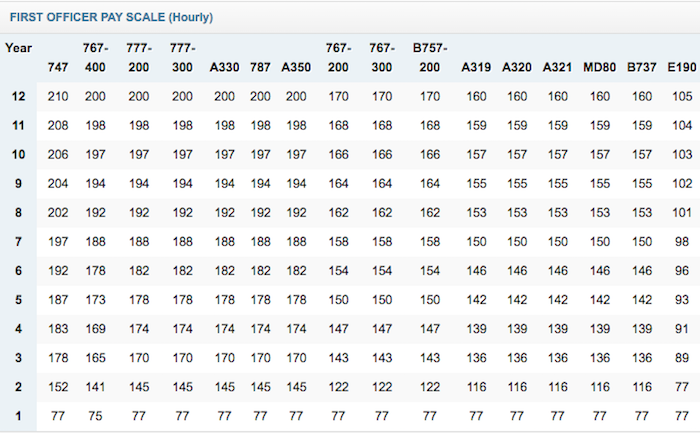
Meanwhile here’s the hourly payscale for Skywest first officers, operating flights on behalf of American Eagle:
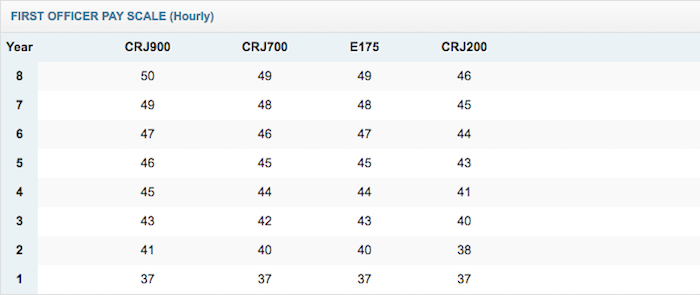
As you can see, pilots at American are making more than double as much, and in many cases even significantly more than that. Admittedly they’re flying bigger planes as well, but the whole idea behind pilots working for regional airlines is that they can build up experience so they can eventually get a job at one of the majors, which is why they’re willing to work for so much less.
So often regional jet pilots are doing it for the experience rather than the money.
For what it’s worth, Skywest is one of the best paying regional airlines. Take a look at the payscale for Mesa Airlines, and you’ll see that the pilots basically don’t make a living wage.
How do regional airlines make money?
It’s a pretty good business model for regional airlines. Typically regional airlines get paid a fixed cost for operating certain routes, and then all the risk lies with the major carrier they’re flying on behalf of. In some cases they’ll get incentive payments for operating on-time flights, not canceling flights, etc.
While I don’t believe it’s as common in the US, in some parts of the world the regional carriers get a percentage of the profits, so they’re taking on as much risk as the major airline is, if not more.
Why don’t they just own regional airlines and take home the profits?
Regional airlines (mostly) make money, so wouldn’t it make more sense for American to simply own their American Eagle planes and operate them, rather than letting another company make a profit off of them? The short answer is no, probably not.
The first reason is that it would likely eliminate the cost advantage. Most major carriers have negotiated with their unions that flights with fewer than “X” number of seats will be operated by regional airlines. You can bet that if the regional airlines became part of the major airline (even if a separate division), the major carriers’ unions would be fighting for significantly better pay for those crews.
Meanwhile at regional airlines, pilots and flight attendants are hired knowing full well what they’ll make and how the business model works, so that’s not as much of a concern.
Historically another reason the major carriers have contracted out to regional carriers is because it allows them to share some risk. Keep in mind that historically airlines are ridiculously unprofitable (though that has changed recently). So leased planes were almost a liability rather than an asset, given that they were losing money with just about each flight.
While regional airline contracts last for a certain amount of time, it does allow airlines to adjust demand over time to reflect the market conditions. If demand is way down, major airlines don’t have to renew their regional jet contracts. If demand is up, they can expand their contract, and get more planes quicker than they could on their own.
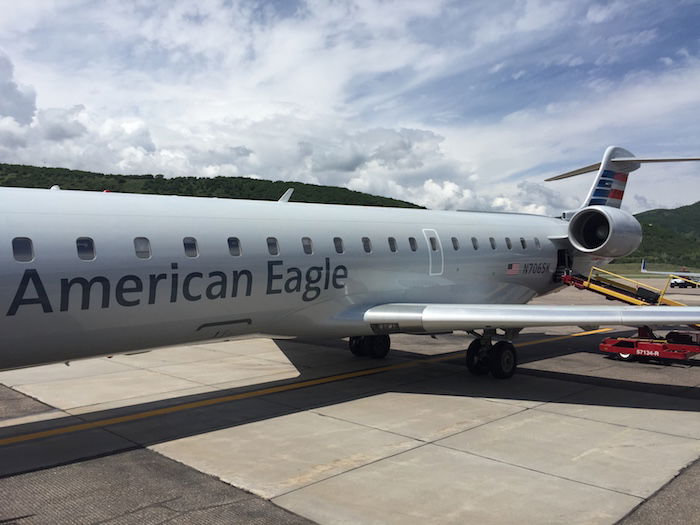
Bottom line
The use of regional airlines allows major airlines to cut corners with costs that they couldn’t cut if they were operating the same flights on their own. Furthermore, over time it allows major airlines to adjust their capacity, since regional jet contracts only last for so long. Typically regional airlines won’t be wildly profitable, but they also don’t have as much risk of being unprofitable as the major carriers.
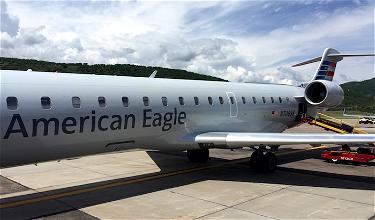

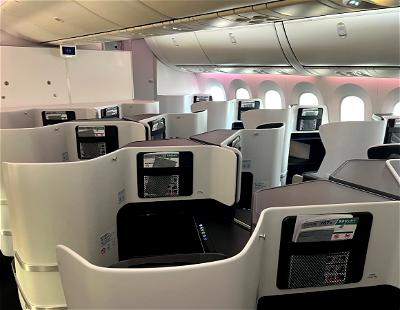


To put this industry in perspective there are effectively only 3 legacy carriers left. That is American, Delta and United (4 with Alaska). The other carriers, such as Southwest, Jet Blue, and Spirit amoungst others, don't engage in code sharing contractors.
The size of the pilot group of all 3 legacy carriers combined is approximately twice that of all their "regional" codeshare partners. What's interesting is that these regional contracts are made up of...
To put this industry in perspective there are effectively only 3 legacy carriers left. That is American, Delta and United (4 with Alaska). The other carriers, such as Southwest, Jet Blue, and Spirit amoungst others, don't engage in code sharing contractors.
The size of the pilot group of all 3 legacy carriers combined is approximately twice that of all their "regional" codeshare partners. What's interesting is that these regional contracts are made up of 13 or so regional airlines and in some cases one regional airline will contract with all three.
The reason is basic market logic. The more contractors available, the lower the overall cost of the contract as contracts are basically bid on by those regionals were the award goes to the lowest bidder. This puts a supressive force on the cost of operation with the cost of labor being the easiest, quickest variable to control costs. So wages are low and the the Union/contract is weak. Meanwhile legacies are merging to control more of the market. This is why any regional airline that gets in financial trouble is quickly bailed out by a legacy.
The real reason regionals exist...it's basically a loop hole around their mainine pilot Union. The reason regional aircraft are small is primarily due to (1) "mainline" pilot contracts that "protect" larger aircraft and its pay and (2) to suit the lower payload demand from some smaller rural communities. Empty seats are loss revenue and cost the airline. (3) Frequency of service. You can have 3 regional jets with different departure times compared to one 757 which leaves only once, this provides consumers with departure time options and flexibility.
It does come at a cost to the product IMO but that doesn't seem to affect net profits. The Regional airlines are a "cash cow" and I feel there is more of a push to operate more domestic flying with these regionals which has in effect allowed America to fly by air. Rural communities that didn't have air commerce now do and airfare is affordable to nearly all socio-economic demographics thanks in large part to regional airlines.
Why does the AA pay scale list a 747? How old is that chart?
The answer is simply "to game their union contracts".
Much of the weird stuff you see on airlines day in and day out is due to union 'baggage'.
Like why UA and CO flight crews couldn't fly each other's metal even YEARS after the 'merger'.
Or, why an old "US Air" gate agent from Terminal 6 at LAX is precluded "by union jurisdiction" from even touching the controls in a jetway at AA's LAX...
The answer is simply "to game their union contracts".
Much of the weird stuff you see on airlines day in and day out is due to union 'baggage'.
Like why UA and CO flight crews couldn't fly each other's metal even YEARS after the 'merger'.
Or, why an old "US Air" gate agent from Terminal 6 at LAX is precluded "by union jurisdiction" from even touching the controls in a jetway at AA's LAX T4. Think about that the next time they send you to the AA penalty box due to lack of gates...
Thank you B Dundat. Very enlightened. In fairness to Ben he said 2000+ hours but anyway I think globally you are on the same page...
@Lucky
"Pilots only get paid for the time the cabin door is closed, so they typically work no more than 1,000 hours per year, while most people with full time jobs work 2,000+ hours per year."
In defense of the pilot position, I completely disagree with you on that. Pilots are "compensated" for flight hours but are generally at "work" for much longer periods than 2,000 hours per year. If you consider only your time...
@Lucky
"Pilots only get paid for the time the cabin door is closed, so they typically work no more than 1,000 hours per year, while most people with full time jobs work 2,000+ hours per year."
In defense of the pilot position, I completely disagree with you on that. Pilots are "compensated" for flight hours but are generally at "work" for much longer periods than 2,000 hours per year. If you consider only your time typing or preparing a trip report, work, then we are making a fair comparison. If you consider the time you step out of your home (somewhat misleading since you evidently don't have one) or base, the time resting in hotels or F or J seats, work, then I suspect you also spend more than 1000 hours a year at work . . . perhaps way in excess of the 2,000 "full time jobs" hours per year. (Do you say "I'm going on vacation" or "I'm going to work" as you leave your home or base?) I will not address the years of preparation required to even qualify for an airline pilot position much less time to qualify (training) and keep (recurrent training and semi-annual flight physicals) qualified for the position.
First I'd like to address Farnorthtrader's question of $22/hr not being a "living wage". As Ben referred to, pilots typically work no more than 1,000 hours a year. What he failed to mention is that by FAA Part 121 regulation, pilots are prohibited from "working" (flight hours) more than 100 hours per month and 1,000 hours per year. (Actually, most pilots are paid block-to-block . . . time the parking brake is released to the...
First I'd like to address Farnorthtrader's question of $22/hr not being a "living wage". As Ben referred to, pilots typically work no more than 1,000 hours a year. What he failed to mention is that by FAA Part 121 regulation, pilots are prohibited from "working" (flight hours) more than 100 hours per month and 1,000 hours per year. (Actually, most pilots are paid block-to-block . . . time the parking brake is released to the time it is set at the end of the trip). Contractually, most flight crews are limited to 85 hours a month so as to avoid "timing out" before the 12 month period passes. In addition to the 100 hours per month, pilots are also limited by "duty time", which is a good thing . . . trust me on this. One should also consider that they are "working", like all others who travel for business, when on-the-road and consider "Time Away From Base" (TAFB) when factoring the compensation. For example, a three day trip may pay 15-24 hours for pay but the TAFB is around 55-72 hours. Thus the compensation for the entire trip, at $22/hour, would be around $7.33 per hour TAFB for the regional pilot making $22/hr. This does not include any consideration of "per diem" that the employer may pay, typically around $2/hr TAFB. So if you consider +/- $7.33/hr gross pay a "living wage", then you win the point.
For @Jason's comment, Non-Revenue travel in F or J is basically a thing of the past for airline employees, especially retired or off-line employees. If you are lucky (not Ben), you might get a seat in Economy Extra or whatever it's called. Doubtful, but possible. I've sat in many airports (the most recent being LAX, SWA) for in excess of 9 hours waiting for a seat to be available while traveling "Non-Rev" or on a "ZED" fare. While I attempt to plan my "free" travel during low projected passenger loads, due to various flight cancellations, weather delays, etc., what was only hours/minutes before was an available flight, is now full. Why "free" travel may be available to me, I often purchase an advanced cheap fare or use miles/points for travel because I don't like sitting in airports for 8 hours, Or purchasing a two or three star hotel room because all flights that day are overbooked. I've often rented a car to get into and out of AUS for the first leg of a trip. That pretty much adds $200 to the "free" travel trip. However, being an optimist and with no time constraints, I still occasionally list for a "free flight."
I will state that Jason is marginally correct when stating that airline employees are treated "very well". Having started my flying career in 1967 and securing my first airline pilot position in 1978 (I've worked for 10 different Part 121 airlines from 1978 to 2011, both domestic and international carriers. Three out of ten were very good employers to work for), I've experienced many changes during my career. It is important to remember that "seniority" is not portable. You start at the bottom of the seniority list (right seat) every time you are a "new hire", with the possible exception of contract jobs in Third World nations, few of which offer any "benefits" other than employment.
Jason, I'm not complaining. It's the nature of the beast. I was very fortunate and met many great people and fellow employees (and wife) on my journey, many of whom I still keep in close contact with, including my still happily married wife (to me, the airline "mutt"). I will add that while I knew that being an airline pilot for one of the now "big four" would be good, I didn't realize how good until I got there.
I should add for anyone considering a career as an airline pilot, if your favorite classes in school were recess and lunch . . . perfect! You'll enjoy your career.
$22/hr isn't a living wage?
@ Farnorthtrader -- Pilots only get paid for the time the cabin door is closed, so they typically work no more than 1,000 hours per year, while most people with full time jobs work 2,000+ hours per year.
Ben,
Thanks for answering my question that I submitted through a blog post. i appreciate the time you took out of your day. But I'm still wondering about the labor issue.
Why would the labor issue be a problem
If they created their own subsidiary? Just like horizon. Just like song with delta, and Ted with United.
There wouldn't be labor disputes if they were entirely total different airlines.
How (else) do Regional Airlines make money? They also get subsidies from the Essential Air Service program for serving cities.
I think by outsourcing regional flights, the major airlines can eliminate that part of employee benefits. As we all know, US airline employee are treated very well usually with unlimited free flights on business class and first class. Since those pilots and FAs actually don't work for major airlines, it will be a big save for them.
From a customer experience standpoint, I'm sure many of your readers avoid flying commuter airlines whenever possible. I sure do for a several reasons. The first you alluded to - the lax of experience of the pilots relative to their mainline counterparts. The second is the much higher chance of delays and cancellations. And the third is an accountability issue. When things go wrong, it always seems way too easy for the mainline carrier to...
From a customer experience standpoint, I'm sure many of your readers avoid flying commuter airlines whenever possible. I sure do for a several reasons. The first you alluded to - the lax of experience of the pilots relative to their mainline counterparts. The second is the much higher chance of delays and cancellations. And the third is an accountability issue. When things go wrong, it always seems way too easy for the mainline carrier to blame the commuter and vice versa. Actually, I'll add a fourth. Commuter aircraft seem to be utilized for longer and longer routes. An hour or so is fine with me; 3+ hours is quite another.
It is definitely not true that having a regional owned by a major would result in higher labor costs -- there are lots of examples, as others have mentioned above, of regionals owned by majors, and there have been many more in the past (Comair at Delta and Pinnacle and Compass at Northwest, to give another few examples).
I think it is more to do with the flexibility and the ability to have competitive tension...
It is definitely not true that having a regional owned by a major would result in higher labor costs -- there are lots of examples, as others have mentioned above, of regionals owned by majors, and there have been many more in the past (Comair at Delta and Pinnacle and Compass at Northwest, to give another few examples).
I think it is more to do with the flexibility and the ability to have competitive tension among multiple regional carriers when contracts are being negotiated.
Also, regional airlines go through cycles, and they definitely don't always make money. Though the same could be said for the mainline airlines.
Good, but don't forget Envoy, Piedmont, PSA, and Horizon which are all owned by a a major airline and operate the same as any other regional.
Thank you. Very nice article. Skywest is actually doing pretty good on the monthly DOT report.
Isn't it also to limit their liability in case of regional jet accidents, so that technically the flight was not operated by American, etc. so they are not held liable?
Why don't the large airlines have outsourced companies for non regional jets to avoid union contracts?
Out in the middle, if you want to go somewhere on one of the big three carriers, you're starting your journey on a regional airline. That's just the way it is.
Envoy and PSA are fully owned by AA, Horizon is also owned by Alaska
Or Envoy & PSA which are owned subsidiaries of American......
"Why do airlines like United and Alaska outsource to third party airlines like Skywest for puddle jumpers? Why don’t they just create a separate entity to operate puddle jumpers themselves and take home all the cash?"
Apparently your correspondent has never heard of Horizon Air, a fully owned subsidiary of the Alaska Air Group that operates "puddle jumpers" for Alaska.
https://en.wikipedia.org/wiki/Horizon_Air
;)
(The reason Alaska uses SkyWest is because until recently, Horizon was an all-Q400...
"Why do airlines like United and Alaska outsource to third party airlines like Skywest for puddle jumpers? Why don’t they just create a separate entity to operate puddle jumpers themselves and take home all the cash?"
Apparently your correspondent has never heard of Horizon Air, a fully owned subsidiary of the Alaska Air Group that operates "puddle jumpers" for Alaska.
https://en.wikipedia.org/wiki/Horizon_Air
;)
(The reason Alaska uses SkyWest is because until recently, Horizon was an all-Q400 operation, which is not an optimal plane for longer thin routes. Horizon is adding EJ-175s similar to SkyWest, though.)